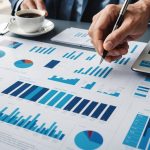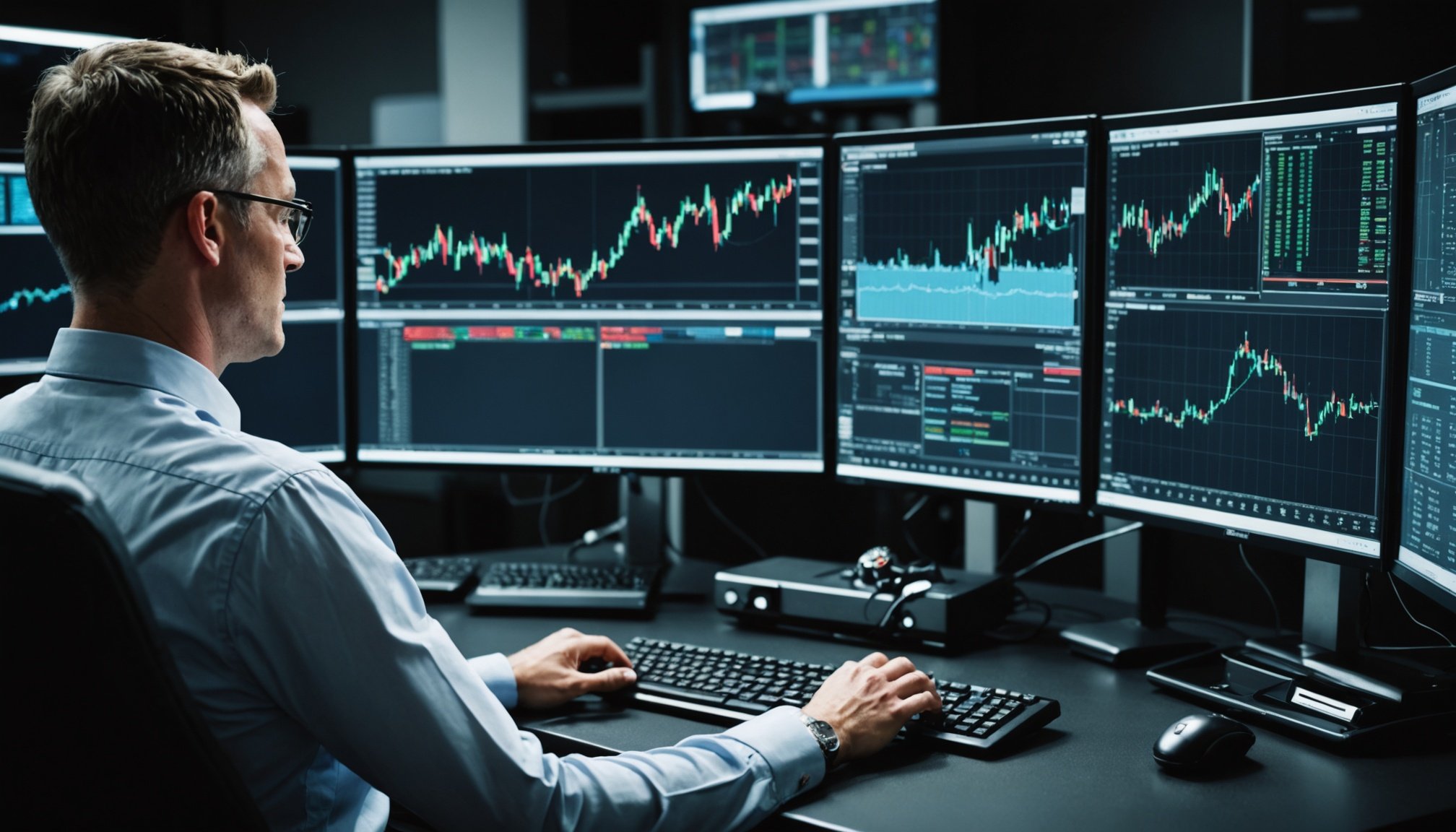Understanding Automated Trading Systems
Automated Trading Systems have revolutionized the way traders operate in the financial market. By leveraging technology to execute trades, these systems minimize human error and increase efficiency.
At their core, Automated Trading Systems rely on complex algorithms to process large volumes of data and execute trades based on predefined criteria. The key components include data feeds, order routing systems, and Trading Algorithms which can be customized to fit various strategies. These systems are particularly adept at executing high-frequency trades, improving speed and accuracy unattainable by human hands alone.
Topic to read : Mastering Instant Fraud Detection in E-Commerce: Your Comprehensive Guide to Building Tailored AI Solutions
The benefits of employing Automated Trading strategies are notable. They allow for the continuous scanning of markets, thus seizing opportunities in real time. Additionally, they help traders remove emotional biases, relying purely on logic for decision-making. Furthermore, these systems provide the ability to backtest strategies against historical data, optimizing potential outcomes.
However, developing these trading systems is not without challenges. Programming the intricate algorithms demands technical expertise, and debugging can be time-consuming. There’s also the constant need to update and adapt systems to evolving market conditions. Despite these hurdles, the benefits, if approached effectively, can outweigh the challenges, providing traders with a competitive edge in an increasingly complex market landscape.
In parallel : Crafting an AI-Powered Experience: Unleashing the Future of Innovation,slugslug
Step-by-Step Guide to Building an Automated Trading System
Creating an Automated Trading System requires a structured approach, starting with initial planning and strategy development. Begin by clearly defining your trading goals and strategies with high precision. Identify the market conditions you wish to operate in, along with the appropriate trading instruments. It’s crucial to outline your risk management and capital allocation strategies in this phase to determine the system’s potential.
Initial Planning and Strategy Development
To kick off the building process, comprehensive initial planning is vital. This involves selecting the appropriate market and defining key parameters based on quantitative analysis. Further, you must develop a solid trading strategy that aligns with your financial goals and market predictions, maintaining a balance between risk and reward.
Selecting Appropriate Software and Tools
The next step involves choosing software tools tailored to your needs. This entails selecting a reliable trading platform and programming languages. Utilising existing libraries and frameworks can accelerate development, though a modular design is crucial for flexibility and scaling. Opt for platforms with integration capabilities to encompass various strategies.
Programming Your Trading Algorithm
Programming a robust trading algorithm is the most technically demanding part. Choose a programming language with financial market support, like Python or Java. Leverage existing libraries and frameworks for technical indicators to streamline development. Always ensure modular design for ease of updates and strategy adjustments.
Implementing Backtesting for Strategy Validation
Backtesting is a crucial step in validating trading strategies before deploying them in a live market. It involves simulating the trading strategy using historical data to assess its potential performance. To establish an effective backtesting environment, consistently update datasets and ensure the simulation accurately reflects real market conditions. This demands a robust infrastructure that can process large datasets efficiently.
Setting Up Your Backtesting Environment
Begin by choosing a reliable backtesting platform that supports your trading algorithms and strategies. Platforms like MetaTrader and QuantConnect offer built-in tools for this purpose. Ensure your environment can handle multiple assets and timeframes. Incorporate different market conditions to evaluate adaptability.
Interpreting Backtesting Results
Interpreting results accurately is vital to understanding the strategy’s effectiveness. Identify key performance metrics such as profitability, drawdowns, and risk-adjusted returns. These metrics illuminate the strategy’s potential and areas needing refinement.
Common Pitfalls in Backtesting
Avoid common pitfalls like overfitting, where a model performs well on historical data but fails in real-world scenarios. Implement out-of-sample testing to mitigate this risk, reinforcing robustness. Moreover, watch for data snooping, which can skew results. Regularly review and adjust strategies to maintain consistency with your trading goals.
Risk Management Strategies in Automated Trading
When engaging in Automated Trading, implementing robust Risk Management strategies is crucial to safeguard investments. Traders must first define their risk tolerance, which sets clear thresholds for acceptable risks in line with personal financial goals and market volatility. Establishing these limits early can avert potential downturns and offer a structured approach to trading activities.
In automated systems, strategies like stop-loss and take-profit mechanisms play an essential role. These tools automatically trigger trade closures once predetermined price levels are reached, protecting investments from significant losses while simultaneously locking in profits.
Diversification is another pivotal strategy in managing risk. By spreading investments across multiple asset classes or trading strategies, traders can mitigate the adverse effects of market fluctuations. This approach reduces the reliance on the performance of a single asset or strategy, thus enhancing overall portfolio stability.
Moreover, continuous monitoring and system adjustments ensure that trading strategies remain aligned with evolving market conditions. Utilising tools for real-time data analysis, traders can make informed decisions and adjust parameters as necessary, optimizing the balance between risk and return. Proactive risk management within automated trading systems ultimately fosters capital preservation and sustains long-term trading success.
Expert Tips for Improving Performance
In the competitive landscape of Algorithmic Trading, optimising Automated Trading performance is key to success. Start by conducting regular system evaluations to identify areas for enhancement. This remains essential for maintaining the reliability and effectiveness of your trading systems. Regular assessments ensure the system operates efficiently and adjusts to user-defined parameters.
Equally crucial is staying informed about prevailing market conditions. Keeping abreast of market trends not only boosts performance but also prevents potential missteps. Regular market updates allow traders to fine-tune their strategies and algorithms accordingly.
Fine-tuning algorithm parameters enhances strategy precision, ultimately refining trading performance. Adjust parameters like entry and exit signals to increase accuracy and adapt to varying market conditions. Staying adaptive with a dynamic approach ensures sustained performance levels.
Traders should consider:
- Leveraging performance metrics to gauge and improve efficiency.
- Using data from recent trades to inform strategy improvement.
- Applying industry insights to anticipate and react to new developments.
Overall, these strategies provide a structured approach, ensuring that trading systems remain agile and responsive to ever-evolving markets. Proactive adjustments maintain competitive advantages and foster long-term success.
Case Studies of Successful Automated Trading Systems
Case studies shed light on the practical application and real-world success of Automated Trading Systems. By examining prominent systems, traders learn what sets these examples apart. In high-frequency environments, systems like Renaissance Technologies’ Medallion Fund illustrate the impact of superior Trading Algorithms. Such systems leverage vast datasets for precise decision-making, a hallmark of successful Algorithmic Trading.
However, not all stories end triumphantly. Lessons from failed systems often pivot on inadequate risk management and neglecting market nuances. Some systems suffer when over-reliant on historical data predictions, leading to substantial losses when market conditions shift unexpectedly. Understanding these pitfalls helps traders refine risk strategies, avoiding similar missteps.
A notable contrast emerges when comparing quantitative and qualitative approaches within case studies. The blend of data-driven analysis and psychological insight creates robust results. Importantly, incorporating psychological factors, recognising behavioural finance, can avert impulsive decisions, ensuring more stable trading outcomes. These insights guide traders in harmonizing technological efficiency with human intuition, crafting more resilient Trading Systems. Armed with this knowledge, traders can optimise their automated strategies, enhancing both initial development and ongoing performance.
Visualizing Trading Performance and Outcomes
Utilizing effective trading visualization techniques is essential in understanding and improving trading strategies. By leveraging a variety of charts and graphs, traders can gain deeper insights into their trading performance. These visualizations simplify complex data sets, helping to identify trends, patterns, and anomalies within the automated trading process.
Key performance indicators (KPIs) such as profit margins, risk-adjusted returns, and drawdowns provide quantifiable measures of system efficiency. By focusing on these metrics, traders can evaluate and enhance their Automated Trading Systems. Employing user-friendly visualization tools like heat maps or scatter plots can contribute to more intuitive data analysis, facilitating quicker decision-making.
Analyzing trading data is a continuous process. Real-time data analysis tools enable traders to monitor fluctuations and adapt strategies accordingly. Advanced platforms often offer customizable dashboards, displaying critical performance metrics at a glance. This capability allows for immediate adjustments, fostering algorithmic trading success.
Trading Systems greatly benefit from the integration of data visualization, as they allow traders to pinpoint areas in need of improvement and seize potential trading opportunities. By embracing such tools, one ensures a more strategic, data-driven approach, ultimately maximizing the potential of Automated Trading.






